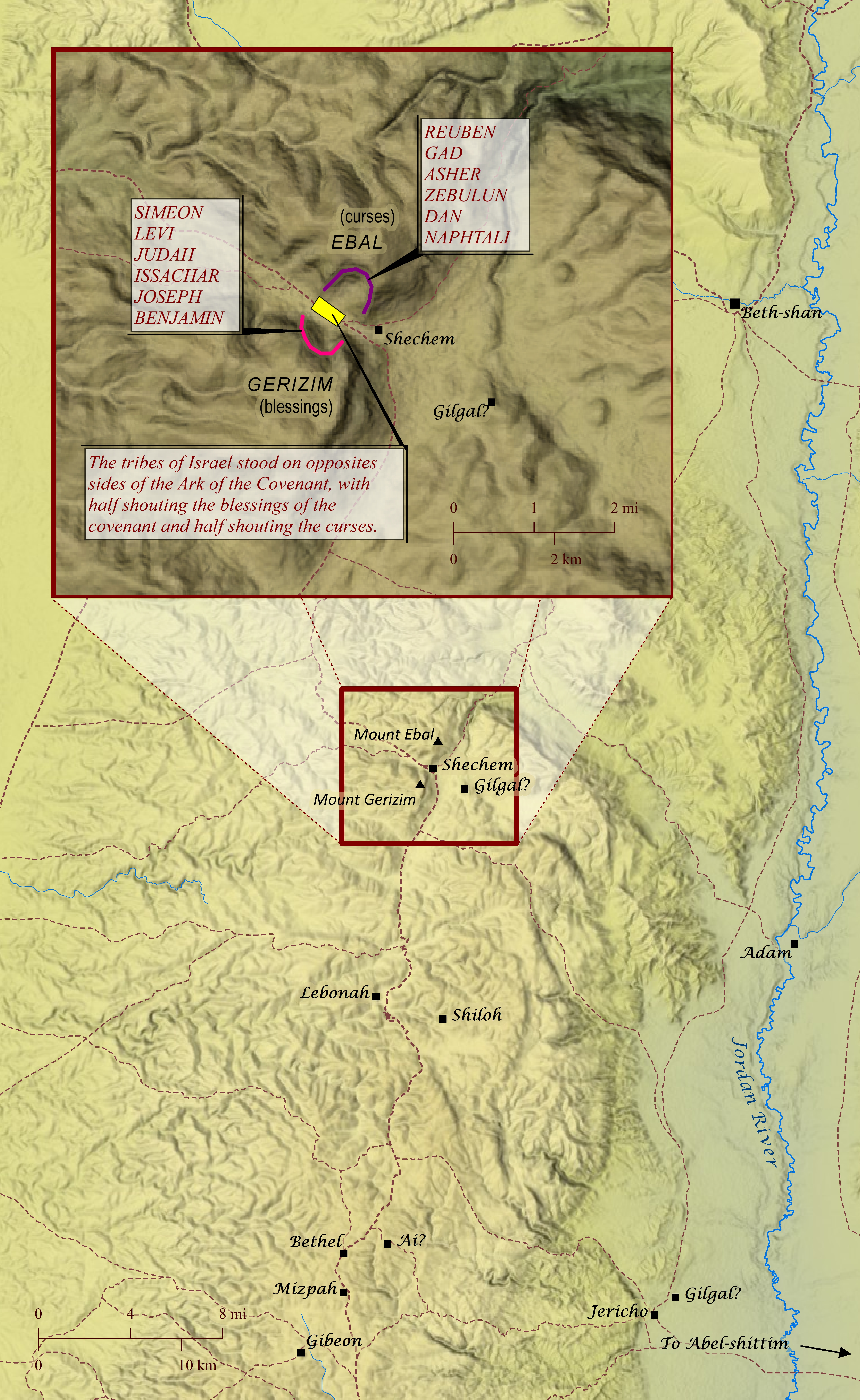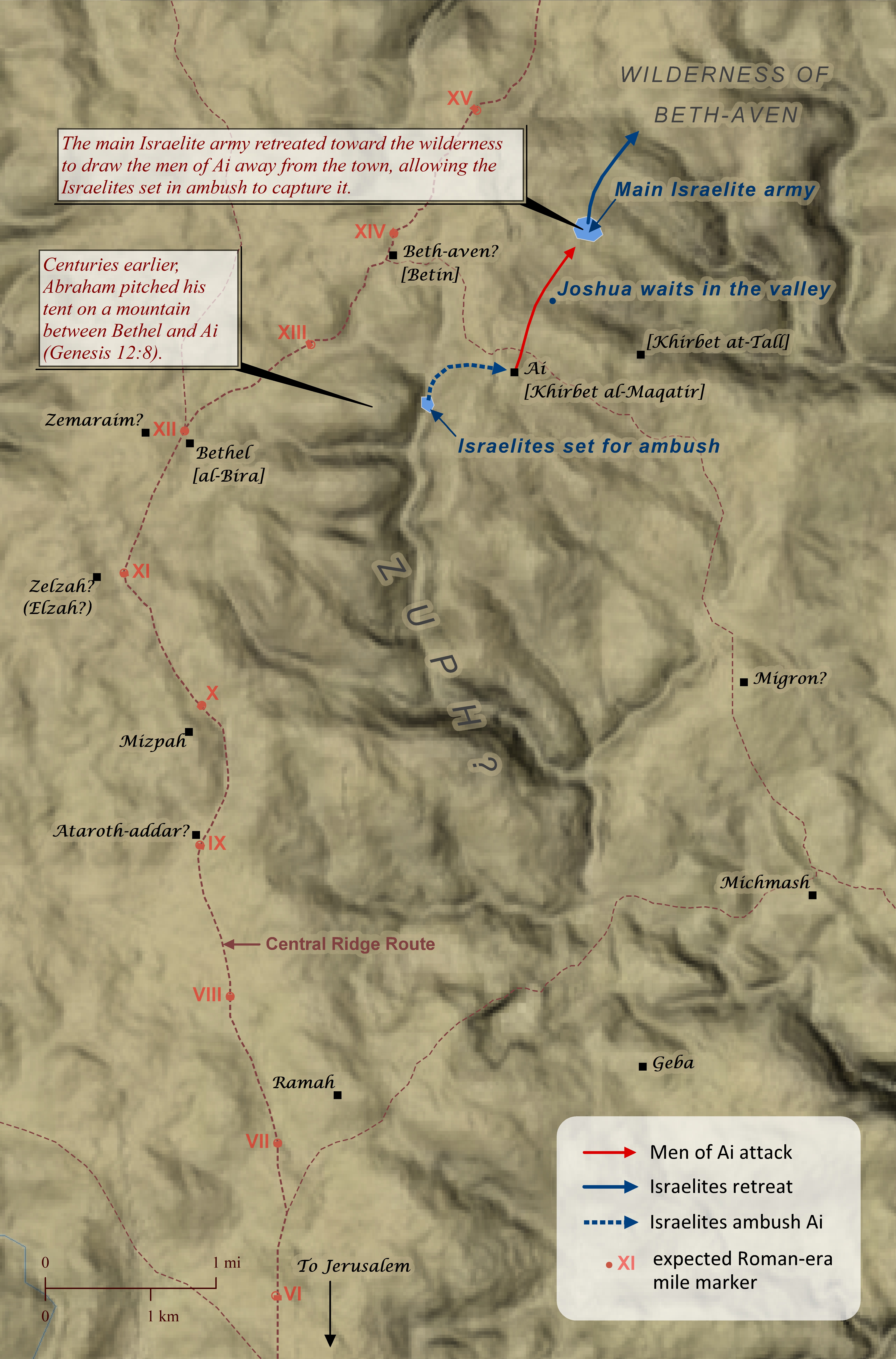
The Covenant Is Renewed at Shechem
Deuteronomy 11:26-32; 27:1-26; Joshua 8:30-35
A quick search on the internet reveals that some of the top ways to commit something to long term memory include: 1) organizing the information; 2) making associations; 3) using visual cues (graphs, etc.); 4) creating mnemonic devices (rhymes, acrostics, etc.); 5) writing it down; 6) saying it out loud; 7) quizzing yourself; 8) and rehearsing it (https://www.usa.edu/blog/science-backed-memory-tips/). There should be no doubt, then, that the covenant renewal ceremony at Shechem would have been a truly memorable event for all involved. Two times in the book of Deuteronomy the Israelites are instructed to renew the covenant at Mount Gerizim and Mount Ebal after they have entered the Promised Land of Canaan, and then the actual event is recorded in the book of Joshua. Located in the heartland of Israel, Mount Gerizim and Mount Ebal sat on either side of the ancient city of Shechem, where the Lord had promised centuries earlier to give Canaan to Abraham and his descendants (Genesis 12:6-7). The renewal ceremony was essentially the corporate, verbal affirmation of the terms of the covenant that the Lord had established with Israel at Mount Sinai. As with virtually all ancient Near Eastern covenants, the terms included blessings for those who remained faithful to it and curses for those who broke it. Joshua and the priests stood between the two mountains with the Ark of the Covenant and read the entire book of the law. Six of the tribes (Simeon, Levi, Judah, Issachar, Joseph, and Benjamin) stood in front of the Ark on Mount Gerizim and shouted the blessings for faithfulness to the covenant, and six of the tribes (Reuben, Gad, Asher, Zebulun, Dan, and Naphtali) stood in front of the Ark on Mount Ebal and shouted the curses for unfaithfulness. It is very possible that this ceremony was performed within a natural amphitheater that exists even today on both Gerizim and Ebal at the place shown on this map. By standing within the concave spaces of the two mountains, the tribes would have been both “on” the mountains (Deuteronomy 27:11-13) and “on opposite sides of” the Ark (Joshua 8:33), and they would have been entirely capable of hearing Joshua’s words as well as each other’s shouts of blessings and curses. As far as why Gerizim was assigned the place of blessing and Ebal the place of curses, it is not entirely clear, but it may be because the ancients typically regarded east as being in front of them, so Gerizim would have been located on their right, which was typically favored over the left. Also, commentators have often expressed confusion over the mention of “the arabah” and “Gilgal” in Deuteronomy 11, typically because it is assumed that they refer to the Jordan Valley and the Gilgal near Jericho, respectively. This author, however, is convinced that “the arabah” (often meaning, “plain”) refers to the small plain immediately east of Shechem. And “Gilgal” (meaning, “wheel/circle”) in this verse refers to a location just across the plain at Khirbet Gulegil. (The name “Gilgal” was likely applied to at least four locations throughout Canaan; see Joshua 4:19; 15:7; Judges 3:19; 2 Kings 2:1; 4:38; Deuteronomy 11:30.) Centuries later, a Samaritan temple was built atop Mount Gerizim after foreign peoples were resettled in Israel, and this is what the Samaritan woman was referring to when she said to Jesus, “Our ancestors worshiped on this mountain, but you say that the place where people must worship is in Jerusalem” (John 4:20). But Jesus replied to her, “Believe me, the hour is coming when you will worship the Father neither on this mountain nor in Jerusalem….But the hour is coming, and is now here, when the true worshipers will worship the Father in spirit and truth” (John 4:21-23; see also “Shechem and the Hill Country of Samaria” map).

The Israelites Conquer Ai
Joshua 8
[Author’s note: This map and article assume that Ai was located at Khirbet al-Maqatir and Bethel was located at al-Bira. It is beyond the scope of this article to present all the convincing reasons for these assumptions, but they are well summarized in the following articles: “Traditional Site of Bethel Questioned,” “Location of Biblical Bethel and Ai Reconsidered,” and “The Khirbet el-Maqatir Excavations.” The expected locations for Roman mile markers are also included on this map, which confirm that al-Bira is located precisely at the twelfth mile marker from Jerusalem, as Eusebius and Jerome both asserted. All other maps in this Atlas have been recently updated to use these same locations for Ai and Bethel.
Soon after the Israelites entered the Promised Land and captured the city of Jericho, they sent a force of only three thousand men to capture the much smaller fortified town of Ai (Joshua 7). They suffered defeat, however, and the Lord revealed to them that this happened because a man named Achan had taken some of the devoted items from Jericho. So Joshua took Achan and his family to the Valley of Achor and executed them there (see Israel Enters the Promised Land map). Later the Lord told Joshua to attack Ai again, because this time he was going to give them the town. It appears that Ai, which had a direct line of sight to the more powerful city of Jerusalem to the south, must have served as a sort of early warning outpost for the larger city. Thus, capturing Ai was critical to staging an effective battle campaign throughout southern Canaan. So Joshua advanced with thirty thousand troops during the night and camped north of the city, and he positioned a force of five thousand men in ambush between Bethel and Ai, just to the west of Ai. The men in ambush were also just east of the mountain where Abraham had pitched his tent centuries earlier (Genesis 12:8). Joshua himself spent the night in the valley between Ai and the main Israelite camp. Early the next morning, the king of Ai led all the inhabitants of the town in an attack on the main camp of the Israelites, who feigned retreat into the wilderness. After the Israelite army had drawn the people of Ai away from the town, the Israelites hiding in ambush rose up and captured Ai. They set the town on fire, sending a signal to the the main army of Israelites to turn back upon the forces of Ai. The Israelites completely destroyed the people of Ai and reduced the town to a burning heap of ruins.